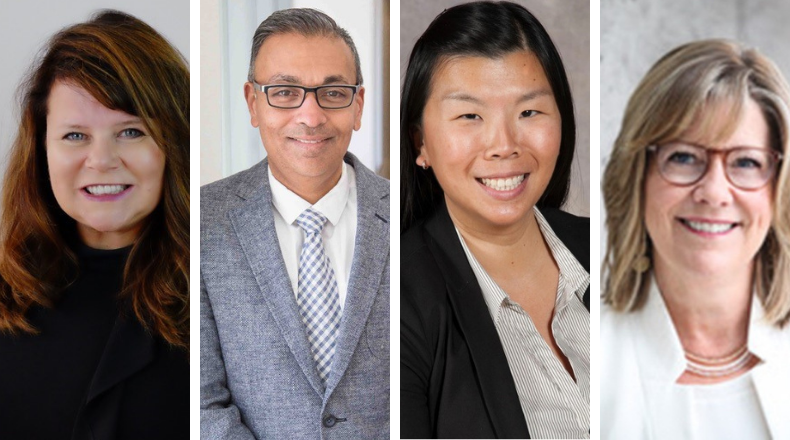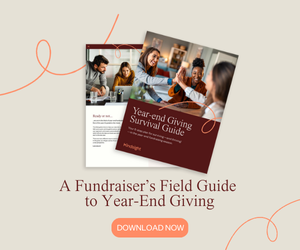Leadership: A Time of Reckoning?

The AFP Daily in Canada presents a three-part series on leadership in the charitable sector by Gail Picco. Today, we feature Part One – Leadership: A Time of Reckoning? where Gail talks to sector leaders Roger Ali, MBA, C.Dir., CFRE, Kimberley Blease and Diane Lloyd, as well as emerging leader, Teresa Cheng, CFRE, for perspective.
“Leaders and managers make a difference in the experience employees are having at work,” said Pa M.K. Singh, managing partner of Gallup, in a webinar introducing the State of the Global Workplace report, the world’s largest ongoing study of the employee experience.
Jon Clifton, CEO of Gallup, does not mince words.
“Poor management leads to lost customers and lost profits, but it also leads to miserable lives. Gallup’s research into wellbeing at work finds that having a job you hate is worse than being unemployed—and those negative emotions end up at home, impacting relationships with family. If you’re not thriving at work, you’re unlikely to be thriving at life,” he wrote in the introduction to the report.
The US and Canada lead the way globally in experiencing stress and anger in their work life.
- 52% of those working in Canada and the U.S. answered “yes” to a question about experiencing stress at the workplace the day before.
- 18% felt anger.
- 52% reported themselves as “not engaged,” known as the quiet quitters.
- 47% are watching for or actively seeking a new job.
Kimberley Blease, EVP strategic solutions and consultancy at Blakely Fundraising, spent 11 years in B2B corporate marketing and was introduced to the charitable sector by her employer’s philanthropic work. After making the switch from corporate to nonprofit, she worked with Kids Help Phone and St. Michael’s Hospital Foundation. For the past 22 years, she’s been in a leadership role at Blakely Fundraising, which has about 40 clients across North America.
Actual numbers on a leadership gap in the charitable sector are scarce, Blease says.
“But as an agency, we see a variety of workplace cultures. In their daily work with clients, our account teams are often used as sounding boards for people impacted by the culture in their workplace, sometimes in a negative way,” she says. “Anecdotally, we learn about what people are going through and, right now, I can tell you that about half of our clients are looking for people to fill vacancies. One client said they anticipate it will take eight to 10 months to recruit and fill a position.”
Diane Lloyd is the founder and CEO of Inspired Results Group (IRG) specializing in creating engaging workplaces and partnering with leaders across sectors to access their potential and the potential of those around them.
“Twelve years ago, I was in a leadership role at the Royal BC Museum,” she said, “And I met a coach who helped me anchor my leadership style and it really helped me find my feet. Prior to that, I had been managing from instinct, with no professional development on the skills of management and leadership. I often felt alone and lonely.”
She says that learning how to be a better leader was such a revelatory experience, it changed the course of her professional life. She studied how to become a leadership coach and create positive workplace cultures–eventually starting her own business to help people do the same.
“I’d learned my lesson,” she says. “You need to learn things in order to know things. Now, as a leader in the coaching space, I invest in myself over and over, and that didn’t happen as a fundraiser.”
Roger Ali, MBA, C.Dir., CFRE, is a major gifts strategist and consultant who, throughout a distinguished career, has raised hundreds of millions of dollars for a variety of causes. He is former president and CEO of Niagara Health Foundation, vice president of development for Hamilton Health Sciences Foundation and executive director of the Bishop Strathan School Foundation. He is currently chair-elect of AFP Global.
“Since the COVID-19 pandemic, leaders have had to change their styles,” he says. “More flexibility is needed. I have seen employee attitudes about what constitutes meaningful work and what they are prepared to tolerate has changed. As such, leaders have had to go beyond the HR policies, listen more intently, and accommodate more than we have done in the past if we want to keep our employees.”
“In the past five to seven years, I’ve worked in sectors other than the nonprofit sector, and a couple of broad themes emerge as problems of management—the absence of learning and the presence of burnout,” says Lloyd.
In her recent book, The Burnout Epidemic: The Rise of Chronic Stress and How We Can Fix It published by Harvard Business Review Press, workplace culture influencer Jennifer Moss writes that, “Although the concept of occupational burnout originated in the 1970s, the medical community has long argued about how to define it.”
In 2019, the World Health Organization (WHO) finally included burnout in its International Classification of Diseases (ICD-10), describing it as “a syndrome conceptualized as resulting from chronic workplace stress that has not been successfully managed.” According to the WHO, burnout is characterized by three dimensions:
- Feelings of energy depletion or exhaustion;
- Increased mental distance from one’s job, or feelings of negativism or cynicism related to one’s job; and
- Reduced professional efficacy.
“The WHO definition is important because it acknowledges that burnout is more than just an employee problem; it’s an organizational problem that requires an organizational solution,” writes Moss.
“There is a financial cost to organizations due to burnout—they have recruitment and hiring expenses, there’s a loss of organizational wisdom. It makes relationships with donors harder to maintain. But there’s a human cost too, both mental and physical,” says Lloyd. “People often feel there’s something wrong with them. Even though this is a systems issue, they think, what’s wrong with me that I can’t make this work. It’s extremely damaging to the individual’s identity and well-being.”
Teresa Cheng, CFRE, is a “NextGen” leader, part of the demographic being looked at to fill the existing leadership gap.
From a childhood and youth focused on volunteering, Cheng grew into becoming a volunteer coordinator for a community centre. She took the Fundraising and Volunteer Management Program at Humber College in Toronto, did her internship in Chicago, and worked in the UK. Upon her return to Canada, she became an AFP Inclusion and Diversity Fellow. She’s currently development officer, annual fund & stewardship at Seneca Polytechnic, and an active volunteer for AFP.
“The leadership gap in the charitable sector is indeed a pressing concern,” she says. “Seasoned leaders are retiring or leaving their roles, leaving behind critical vacancies that must be filled by capable successors. It's important to note that this gap isn't due to a shortage of leadership positions but rather a shortage of qualified leaders. The "great resignation" is a result of individuals recognizing deficiencies in managerial support and a reluctance to settle for stagnant personal and career growth. Factors like burnout and heavy workloads are prompting many to reassess their career paths.”
Ali sees the racial elements at play.
“Since the murder of George Floyd and others, leaders who have had a revelation, and are seeing the need for being more inclusive, have been open to anti-bias training, and listening to Black and Brown people. But even this is not enough,” he says. “We must work through Truth and Reconciliation. Right now, Black, Brown, and Indigenous leaders are working on it, and some white-led organizations are doing the work, but more needs to be done across the board.”
“Learning is not built into the culture of most charitable organizations, and we see the result in poor leadership skills,” says Lloyd. “I work in other sectors, such as education, where learning is built into their structures. But we don’t appear to prioritize an investment in leadership training. I was 42 and had been in a leadership position for 20 years and wasn’t offered any leadership learning during that time."
“I don’t believe anyone is a “born leader”,” says Kimberley Blease. “Leadership skills can and need to be learned by anyone in leadership or aspiring to be a leader. And the scarcity mindset that exists in charities that prevents investing in staff is just not sustainable. Charities cannot not do the basics expected of an employer because they are a charity. This is no longer going to fly with the new generations who are entering the profession.”
The next installment of the Leadership Series, Leadership: What does it mean to be 'different'? will be published on October 25.




